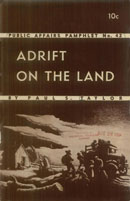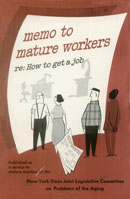 Administrative Section
Administrative Section
During the mid-twentieth century, the American Labor Movement reached a pinnacle of power and influence within society. The Second World War required that labor be managed as a strategic resource; the high productivity of workers during the war carried over in the peace time economy, which experienced a sustained economic "boom." Unlike European labor relations, where unions play an "official" role in government, the American trade union system does not allow for an official "place at the table" for unions. U.S. labor unions nonetheless wielded extensive political power and also were in a position to influence social policy in a wide of array of areas.
The extent of labor's reach was often seen in its concerted efforts to secure better pay, better working conditions and reliable pensions for its members. These priorities spilled over into the non-unionized workplace, where management actively sought to stay "union-free" by matching or improving upon union  benefits. It could be argued that workers benefited from this competition. However, even as labor reached the apex of its power, it was already becoming more bureaucratic, more institutional and less bold in its actions. At the same time, management associations remained virulently anti-union, and the Cold War triggered widespread probes of unions as potential "hot beds" of communist activity. Even as the U.S. labor movement reached many of its goals with respect to policy and influence, it found itself beset from all directions with competing and even hostile forces within the fabric of society.
benefits. It could be argued that workers benefited from this competition. However, even as labor reached the apex of its power, it was already becoming more bureaucratic, more institutional and less bold in its actions. At the same time, management associations remained virulently anti-union, and the Cold War triggered widespread probes of unions as potential "hot beds" of communist activity. Even as the U.S. labor movement reached many of its goals with respect to policy and influence, it found itself beset from all directions with competing and even hostile forces within the fabric of society.
This multi-disciplinary collection captures some of the flavor of the times. It provides original documents, pamphlets, company publications, union reports, student papers and theses that explore the state of American Labor during these heady years. The collection has five areas of focus:
The General Labor category offers a cross-section of materials that breathe life into the debate about the leading issues of the times. Longshore Workers explores the tumultuous post-war history of the ILWU and the Pacific Maritime Association, with original materials from both organizations as well as related materials. Minority workers made important strides in the workplace, both during World War II and in the years following the war. It could be argued that the workplace of the 1950s was a front line in the civil rights movement, because work was a forum where all kinds of people came together for a common purpose. Older Workers and Personnel Policies both explore societal attitudes toward the work force, which was comparatively "youthful" at the time, but was certain to "age" as the twentieth progressed. Personnel policies, including pension policies of the era reveal a direct look at how policy making was formed and implemented.
movement, because work was a forum where all kinds of people came together for a common purpose. Older Workers and Personnel Policies both explore societal attitudes toward the work force, which was comparatively "youthful" at the time, but was certain to "age" as the twentieth progressed. Personnel policies, including pension policies of the era reveal a direct look at how policy making was formed and implemented.
This digital collection was funded by the University of California Labor and Employment Research Fund (LERF).
Scope and Content Section
This digital repository enables scholars to study broad trend in U.S. labor and industrial relations. It provides access to original materials from a variety of authors, organizations and government agencies, which together provide a multi-disciplinary perspective on the life and times of the labor movement between 1945 and 1980.
Contact
J Kimball
jankim@berkeley.edu